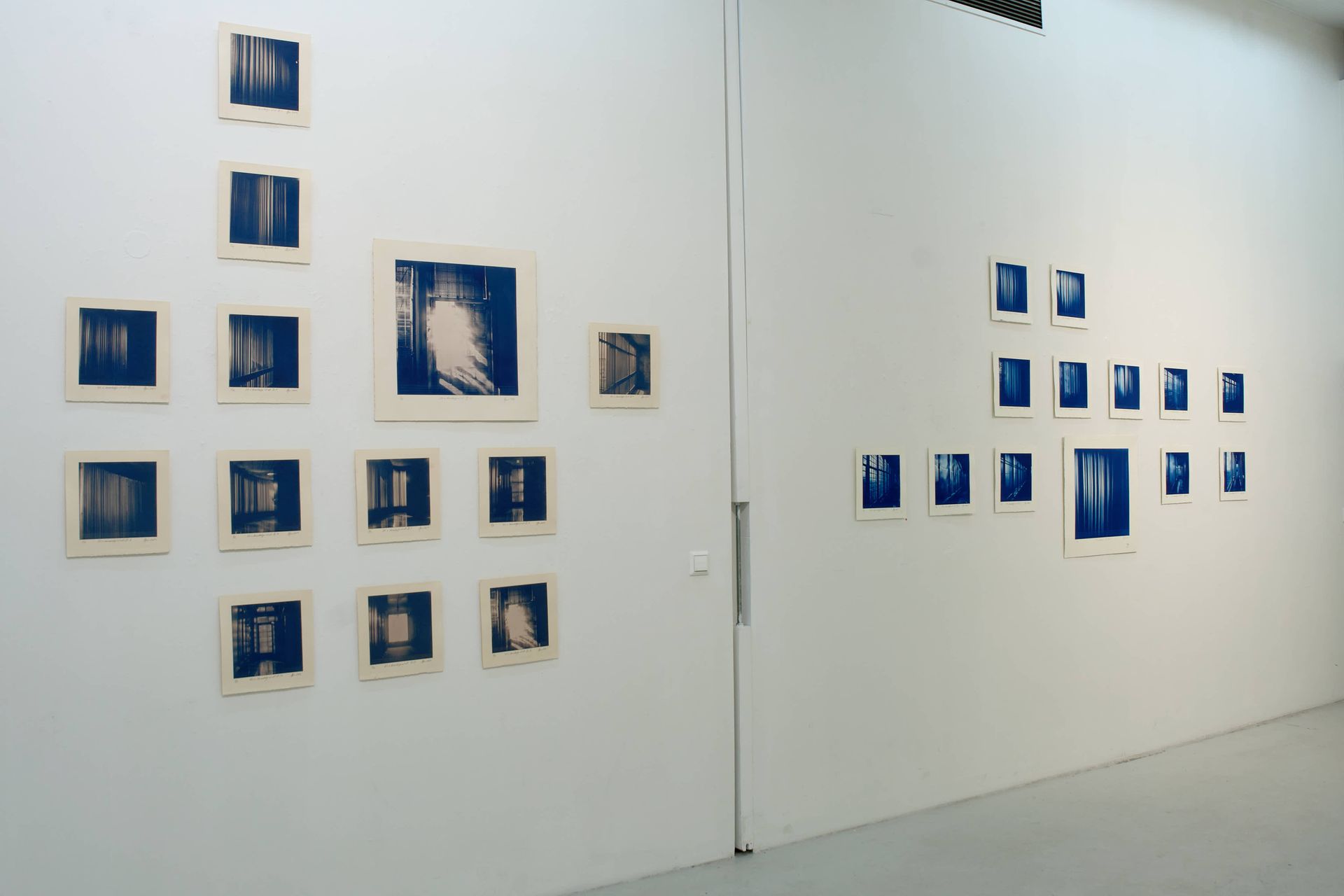









Frummyndir myndanna í Alls engin þekking eru unnar frá grunni í myndgerðarforriti, Stable Diffusion XL, sem nýtir sér gervi greind til þess að framkalla myndir út frá textalýsingu. Við rannsóknir mínar á möguleikum og forsendum slíks hugbúnaðar vaknaði meðvitund um að nýta mætti slíkar aðferðir myndgerðar til að búa til óvenjulegan myndheim.
Í þessu tilviki byggja myndirnar ekki á myndrænni lýsingu heldur heimspekitexta. Textinn er eftir franska heimspekinginn Jacques Derrida og fjallar um möguleika og takmarkanir tungu málsins. Slíkur texti gerir hugbúnað inum erfitt fyrir og leiðir til óvæntrar útkomu. Allar mynd irnar á sýningunni byggja því á sama texta. Munurinn á milli myndraðanna sex er sá að grunnmyndin sem þær byggja á er ólík. Munurinn innan hverrar myndraðar á rætur sínar í mun á stillingum sem stýra myndgerðinni. Með þessu móti verða til myndir sem eru hliðstæðar hverri annarri í túlkun, en ólíkar innbyrðis. Eftir að búið var að keyra þessar frummyndir út var hefðbundinni tækni ljósmyndunar beitt til að vinna myndirnar þannig að þær hentuðu fyrir bláprent.
We know that these exchanges only take place by way of the language and the text, in the infrastructural sense that we now give to that word. And what we call production is necessarily a text, the system of a writing and of a reading which we know is ordered around its own blind spot. We know this a priori, but only now and with a knowledge that is not a knowledge at all, thus illustrating the critical relationship between text and imagery.
Jacques Derrida, Grammatology
Kýanótýpa eða bláprent er ljósmyndaaðferð fundin upp árið 1842 af breska stjörnufræðingnum John Herschel. Nafnið er komið frá grísku orðunum »kyanos«, sem merkir »djúp-blátt« og »typos«, sem þýðir mark eða mynd. Í þessum verkum er vatnslitapappír þakinn ljósnæmu efni. Negatív filma jafnstór myndinni er lögð yfir pappírinn og síðan lýst með útfjólubláu ljósi. Þegar pappírinn er þveginn verður eftir djúpblá mynd. Hún er bleikt með lausn úr þvottasóda til að deyfa bláa litinn í ljósu flötunum. Sumar myndanna eru að lokum tónaðar með lausn sem unnin er úr jurtaefnum, ævafornum litarefnum. Við tón- unina taka ljósu fletirnir á sig hlýjan gráleitan blæ, mismunandi eftir því hvaða efni er notað, sem gefur myndinni einkennandi karakter og dökkbláu litirnir verða svarbláir. Í þessari sýningu eru bláu myndirnar ótónaðar, en aðrar eru tónaðar með dufti úr hvítum eikareplum, svörtum valhnetuskeljum, rauðfuruberki eða súmak-laufum.
English version
The prototypes of the images in Not a Knowledge at all are created from scratch in an image generation program, Stable Diffusion XL, which uses artificial intelligence to develop images based on text descriptions. During my research into the possibilities and prerequisites of such software, an awareness arose that such methods of imagery could be used to create an unusual visual world.
In this case, the illustrations are not based on graphic descriptions but on philosophical texts. The French philosopher Jacques Derrida’s text deals with the possibilities and limitations of language. Such text makes it difficult for the software and leads to unexpected outcomes. All the pictures in the exhibition are therefore based on the same text. The difference between the six series is that the basic image they are based is different. The differences within each sequence are rooted in differences in the settings that control the image type. In this way, images are created that are analogous to each other in interpretation, but different from each other. After these prototypes were generated, traditional photography techniques were used to process the images to suit cyanotypes.
The cyanotype is a photographic method invented in 1842 by the British astronomer John Herschel. The name comes from the Greek words »kyanos«, which means »deep-blue«, and »typos«, which means mark or image. In these works, watercolor paper is covered with a light-sensitive material. A negative film equal to the size of the image is laid over the paper and then illuminated with ultraviolet light. When the paper is washed, a deep blue image remains. It is bleached with a solution of washing soda to mute the blue color of the light surfaces. Some photos are finally toned with a solution from plant materials and ancient pigments. The light surfaces take on a warm greyish hue during the toning, varying depending on the material used. This gives the image a characteristic character, and the dark blue colours become black blue. In this exhibition, the blue paintings are untoned, while others are toned with powders of white oak galls, black walnut shells, red pine bark or sumac leaves.
